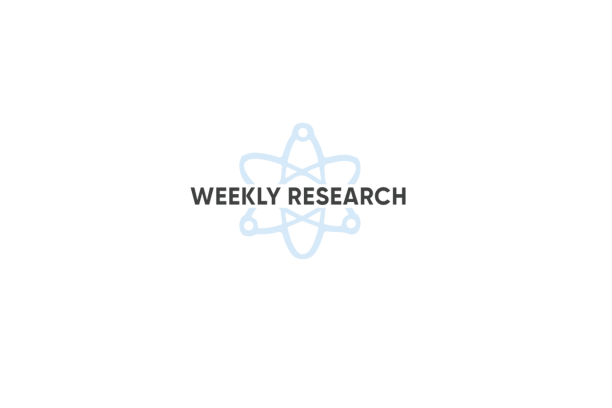In this week’s research roundup, we explore two new studies that shed light on the potential advantages of remote patient monitoring and video technologies for improving patient care, enhancing nurse efficiency, and redefining healthcare delivery. Join us as we explore the key findings of these studies and the promising future they envision for healthcare.
Study 1: Advantages of Remote Patient Monitoring
Many advantages of remote patient monitoring have been identified throughout the COVID-19 pandemic. However, telemonitoring implementation within the United Kingdom has been slow. The research in this study aimed to uncover the barriers and facilitators of telemonitoring among patients and healthcare professionals.
The meta-synthesis identified four key themes that identified four barriers to using remote patient monitoring. This exploration is based on a comprehensive analysis of existing qualitative research and evaluating how individuals and qualified healthcare professionals interact with remote patient monitoring technology. All participants were 18 years and over with one or more of the following diseases: COPD, cardiovascular disease, or diabetes.
Improved Care
“Improved care” was one of the advantages of remote patient monitoring identified in seven of the nine studies reviewed. Patients reported an increase in self-care. Furthermore, patients expressed experiencing positive lifestyle changes such as improved dietary habits, better medication adherence, and a deeper understanding of their diseases. In addition, the individualized treatment plans crafted through telemonitoring made them feel more secure and valued.
Communication
Another theme associated with the advantages of remote patient monitoring was “improved communication.” Most patients reported frequent contact with their pharmacist and remote monitoring were “supportive and helpful.” Patients enjoyed receiving “instant feedback and “communication back and forth” between patients and healthcare professionals. However, some patients encountered difficulties, such as unclear roles and minimal contact.
Technology Acceptability & Feasibility
Participants generally found telemonitoring convenient and time-saving. Despite this, some faced challenges with device usability. Privacy and security concerns regarding personal health data were raised, and generational differences influenced technology acceptance. The studies in the analysis did not thoroughly examine disparities in technology acceptance between urban and rural areas. Nonetheless, one study raised concerns among participants regarding inadequate internet connectivity. Hence, the feasibility of technology usage may hinge on the quality of available digital infrastructure.
Intervention Concerns
Participants expressed concerns about the privacy and security of their health data. Older participants found remote patient monitoring devices more challenging to use, emphasizing the importance of device education and support. However, Nonetheless, one older patient noted that “as long as someone shows me… I can do it.”
Study 1 Key Points: Advantages of Remote Patient Monitoring
The meta-study concluded that telemonitoring is feasible and acceptable for chronic disease management. It offers convenience and improved communication. However, barriers to device usability, data security, and generational differences must be addressed for successful implementation. The research suggests the need for further investigation into the most effective telemonitoring technologies and tailored support for users of varying demographics. Overall, the advantages of remote patient monitoring are acknowledged as a tool to improve patient satisfaction and care in chronic disease management.
Study 2: Advantages of Remote Patient Monitoring with Remote Video-Monitoring
With advancing technology, healthcare professionals constantly seek innovative solutions in healthcare delivery. A recent study has unveiled the potential advantages of remote patient monitoring using remote video monitoring. This technology offers continuous in-hospital patient audio-video monitoring by technicians, presenting promising results regarding patient safety, nurse efficiency, and overall satisfaction.
Data collection encompassed pre- and post-implementation phases on safety metrics such as fall rates and adverse events. Additionally, it included the evaluation of device utilization and the number of escalation events that required nursing intervention. Nurse job satisfaction was assessed through surveys.
Advantages of Remote Video Monitoring
The study monitored continuous oxygen saturation across multiple inpatient units within a hospital network. Remote video monitoring technicians identified 54,716 safety concerns, many requiring remote interventions. Of these concerns, 46,289 needed escalation to nursing staff promptly alerted by the remote video technology. Notably, the technicians effectively managed a substantial portion—8,427 safety concerns. As a result, the need for nursing visits to the bedside was eliminated.
Nurses who participated in surveys said they were reassured by the additional support provided by remote video monitoring in managing their patients. Patients and their families also expressed high satisfaction with this technology. Since its implementation, remote video monitoring has reduced fall rates and adverse events, with the most substantial impact observed in patients receiving high-flow oxygen. Furthermore, the incidence of code blues and mortality rates decreased significantly, from 7% to 1%.
Study 2 Key Points: Advantages of Remote Video Monitoring
The study’s findings highlight the advantages of remote patient monitoring through remote video monitoring in a U.S. healthcare setting. This innovative technology enhances patient safety and optimizes nurse efficiency, allowing them to manage patient care effectively. Moreover, the increased reassurance among healthcare professionals and the positive feedback from patients and their families underscores the human-centric benefits of remote video monitoring.
As the healthcare landscape continues to evolve, embracing technological advancements like remote video monitoring promises to improve both patient care and the work-life quality of nurses, ultimately shaping the future of healthcare delivery. These studies showcase the incredible potential of these technologies in revolutionizing patient care and the healthcare industry as a whole.
Scroll down now to subscribe to Tenovi’s Weekly Research Round-Up. If you are part of a chronic care management, telehealth, or RPM software and services company, explore Tenovi RPM solutions. Book your free demo and consultation with us today.


